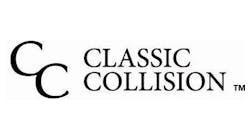The biggest mistake Tom Zoebelein sees body shop owners make is believing that, once they are OEM certified, they’re done. That’s it. There’s no next step.
That, he says, is a mistake.
Zoebelein, owner of Stratosphere Studio, an internet-marketing service for body shops, says one common mistake keeping MSOs from standing out from each other lies within the OEM certification.
When an MSO takes the time to educate the customers on why the shop being OEM certified is a differentiator for the business, then the MSO will stand out from some of its corporate or franchise competitors.
Zoebelein has over 15 years of experience with consulting with body shops on marketing matters. Today, he sees one question being asked often but without an answer: How do shops leverage OEM certifications to customers?
If a customer goes to the website for Mid Island Collision Repair, he or she will first see an image of a couple embracing each other and the words, “Your Safety is Our Priority.” Before the customer sees any other words or offers of any services, the body shop is making a point about safety. This small image and wording is what makes Mid Island Collision Repair stand out from other body shops, according to Zoebelein. Customers are seeing information about OEM certifications but they are essentially getting information on a part of the repair no one is even aware they need to know about, he notes.
Zoebelein shares his tips to educate customers on OEM certifications and make an MSO stand out as one that cares about more than just the repair or the sale, but about customers’ safety at every point of a repair.
As told to Melissa Steinken
First, focus on writing industry content for the customer. When you start digesting information learned through an I-CAR class for example, you need to stop and think about how you’re going to present this information to the customer. The customer has not gone through the same training and does not have the same background knowledge as a body shop expert.
Instead, you need to take that I-CAR information and write it for the customer. Phrase it into a way that tells the customer why he or she won’t get the same repair as the body shop down the street.
Second, explain industry jargon. When writing about the service on the website, make sure to write about how the service will ultimately help the customer. For example, write about what a customer can look for when it comes to a clear coat that’s blended and whether to tell if it’s done correctly or not. Or, give advice on what to look for when searching for a body shop. Remember to use less collision repair vocabulary and write in general terms.
Third, remember that your body shop website is getting found. Your website is getting clicks and people are going to it. The question remains, “What do you want people to find once they get there?”
If you repair mostly Subarus and BMWs then you want to focus the information on those types of cars. Write blog posts about the repairs done on those cars so that a customer can find specific information or answers to their questions.
Fourth, stop simply posting an OEM logo onto the website. If a customer sees a sign or a logo that says you are OEM certified, there is a very high chance that customer won’t know what it means. Maybe they’re thinking, “What is an OEM?”
When writing about the OEM certification that your shop received, you need to phrase the post into how the certification benefits customers. Once a customer clicks through the button to “learn more” on the Mid Island Collision Repair website, he or she will be able to read not only about the number of OEM certifications the shop has but about how an OEM certified repair means the technician is only using equipment mandated by the manufacturer.
Fifth, track the ROI of educating the customer. So, you’ve reached the step where you’ve changed the wording on your website. Now, it’s important to track that customers are clicking on the educational posts on the website. When websites house basic contact information and information about services, the body shop is likely to see a 7 percent conversion rate. People are clicking on the website, going to the homepage and then bouncing.
If the body shop can get one of the customers to convert to clicking through the homepage onto a blog, about 20 to 80 percent of the time that customer turns into a lead or calls the shop.

